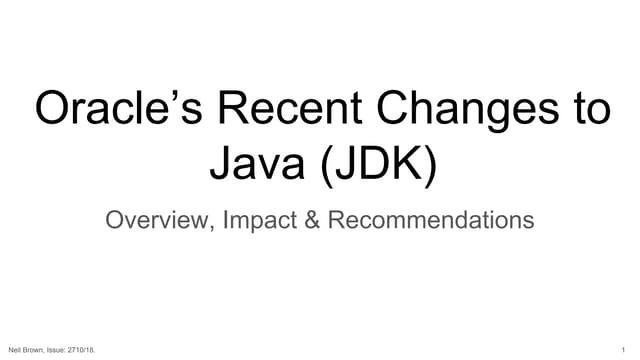
- #Oracle java licensing changes install#
- #Oracle java licensing changes update#
- #Oracle java licensing changes license#
Although Oracle specifies in its FAQ document that existing Java SE subscription customers may renew under their existing terms and metrics, this document is not contractually binding. Oracle will honour the contractually agreed terms and conditions.Įnd users should, however, realise the moment the subscription agreement expires, Oracle may require you to move to the new Employee based licensing and pricing model. Read the Oracle Java SE Universal Subscription FAQsĭoes this impact existing Named User Plus or Processor based subscriptions?Įnd user organisations that already have a Java SE subscription agreement based on the older Named User Plus and/or Processor licensing and pricing model do not need to do anything at this moment in time.

Read the Oracle Java SE Universal Subscription Global Price List
#Oracle java licensing changes license#
If your use exceeds 50,000 processors, exclusive of processors installed and/or running on desktop and laptop computers, you must obtain an additional license from Oracle.
#Oracle java licensing changes install#
Under this Employee metric for Java SE Universal Subscription Programs(s), you may only install and/or run the Java SE Universal Subscription Program(s) on up to 50,000 processors.

Eligible employees are defined by Oracle as: Under the new model - Employee for Java SE Universal Subscription – the quantity of licenses required is determined by the total number of employees in an organisation, not just the actual number of employees that use the programs.
#Oracle java licensing changes update#
To reduce their costs, many end user organisations deinstalled licensable versions of Oracle Java, downgraded licensable versions of Oracle Java to a public update version, consolidated their Oracle Java deployments to a smaller number of machines or implemented storage and network isolation for deployments on VMware.



 0 kommentar(er)
0 kommentar(er)
